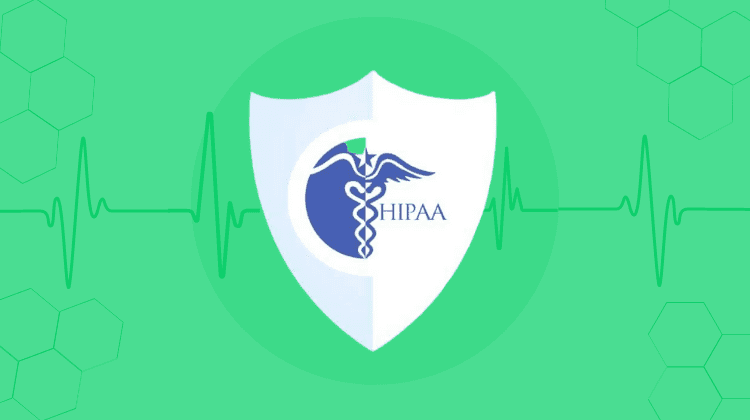Creating a website for healthcare services is a significant responsibility, and your role in this process is crucial. Beyond offering a smooth user experience and valuable functionality, it must comply with stringent regulations to safeguard patient information. The Health Insurance Portability and Accountability Act (HIPAA) is one such regulation.
This article explores everything you need to know about building a HIPAA-compliant website, from its requirements to actionable steps for implementation.
What is a HIPAA-Friendly Website?
A HIPAA-compliant website is designed to safeguard the confidentiality, integrity, and security of Protected Health Information (PHI). PHI encompasses a wide range of sensitive data, including detailed medical records, treatment history, and personal identifiers such as names, email addresses, and phone numbers.
To achieve compliance, such a website strictly adheres to the regulations established under the Health Insurance Portability and Accountability Act (HIPAA), which aims to shield this sensitive information from unauthorized access, potential breaches, and misuse. Non-compliance can lead to severe penalties, including hefty fines and legal actions. Sticking to this is not merely suggested; it is a legal obligation for healthcare providers, insurers, and all third-party services that manage or process PHI. Upholding these standards is essential for maintaining trust, guaranteeing ethical practices, and protecting the rights of individuals whose health information is being processed.
Requirements of a HIPAA Website
To achieve HIPAA compliance, your website must incorporate specific technical and administrative measures:
- Secure Hosting Environment: It is essential to utilize hosting services certified under the Health Insurance Portability and Accountability Act (HIPAA). Examples of such services include AWS HIPAA Compliance and Google Cloud Platform. These services ought to provide data encryption to protect sensitive information and extensive backup solutions to guarantee data integrity. Additionally, they must include disaster recovery plans to swiftly restore access and functionality in the event of data loss or system failure.
- Data Encryption: Strong encryption protocols must be implemented for all data, both when transmitted over networks (data in transit) and stored on devices or servers (data at rest). This security feature safeguards sensitive data from being accessed or intercepted by unauthorized parties, maintaining the integrity and confidentiality of the information throughout its entire lifecycle.
- Access Control: Implement strict user authentication and authorization protocols to limit access to PHI.
- Audit Controls: Maintain logs that track data access and modifications.
- Business Associate Agreements (BAAs): To guarantee full protection of Protected Health Information (PHI), all third-party vendors must sign Business Associate Agreements (BAAs). This action solidifies their dedication to adhering to regulations and emphasizes their important responsibility to protect sensitive information.
- Secure Communication: When communicating any Protected Health Information (PHI), it is essential to utilize email and messaging solutions that offer strong encryption. This guarantees that sensitive data remains secure and is protected from unauthorized access during transmission, safeguarding the privacy of individuals involved.
- Training and Documentation: Consistently provide comprehensive training sessions for employees on the intricacies of HIPAA guidelines, ensuring they fully understand the importance of patient privacy and data security. Additionally, establish and maintain meticulous documentation of all compliance protocols to monitor adherence and facilitate ongoing education in the workplace.
How to Develop a HIPAA-Friendly Site?
Building a HIPAA-compliant website involves a meticulous approach to data security, technical architecture, and regulatory adherence. Here’s a step-by-step guide:
1. Selection of HIPAA-Compliant Backend Service
Start by choosing a backend service provider that complies with HIPAA standards. Popular options include AWS HIPAA Compliance and Google Cloud Platform, which offer built-in security features for healthcare applications. These services guarantee encryption, access control, and audit logging.
2. Encrypted Data Transfer
To guarantee the safety of data being exchanged between users and your website, it is essential to utilize secure transmission protocols such as HTTPS (Hypertext Transfer Protocol Secure) and Transport Layer Security (TLS). These encryption methods play a crucial role in safeguarding sensitive information against interception by unauthorized parties during its journey across the internet. By implementing these protocols, you create a protective barrier that helps to prevent potential misuse of personal and financial data during transmission, promoting trust and security for your users.
3. SSL Certification
Secure Sockets Layer (SSL) certificates are essential for any HIPAA-compliant website. They establish a secure connection between your website and the user’s browser, providing a layer of trust and security. SSL also boosts your website’s search engine rankings, guaranteeing compliance and visibility.
4. Data Integrity
HIPAA compliance requires guaranteeing the integrity of PHI. Implement measures that protect data from unauthorized alterations, such as integrity checks, redundant backups, and robust database management practices.
5. Access Management
Control access to PHI through full user authentication mechanisms. Multifactor authentication (MFA), role-based access control (RBAC), and session timeouts are practical ways to restrict unauthorized access. Maintain detailed logs to track who accessed what and when.
6. Rigorous Testing
Test your website for vulnerabilities before deployment. Conduct penetration testing, code audits, and simulated data breaches to identify weaknesses in your system. Regular testing guarantees ongoing compliance with HIPAA standards as threats evolve.
7. HIPAA-Compliance Training
Investing in training for your team on HIPAA regulations and best practices is crucial for your organization’s success. When every member, from developers to customer support, understands their vital role in safeguarding Protected Health Information (PHI), it allows a security culture. This collective awareness empowers your staff to adhere to security protocols and significantly reduces the risk of costly breaches. By prioritizing this education, you protect your users and guarantee your organization’s integrity in a complex regulatory landscape.
Bottom Line
A HIPAA-compliant website is essential for healthcare businesses that handle PHI. By following key steps such as selecting a secure backend, encrypting data, obtaining SSL certification, managing access, rigorous testing, and investing in employee training, you can guarantee long-term adherence to HIPAA standards. This commitment protects patient privacy, fosters trust, and ensures your organization’s integrity in a complex regulatory landscape.
Developing a HIPAA-compliant website is more than a regulatory obligation—it’s a commitment to protecting patient privacy and fostering trust. While the process may seem complex, following a structured approach and adhering to best practices can simplify compliance.














